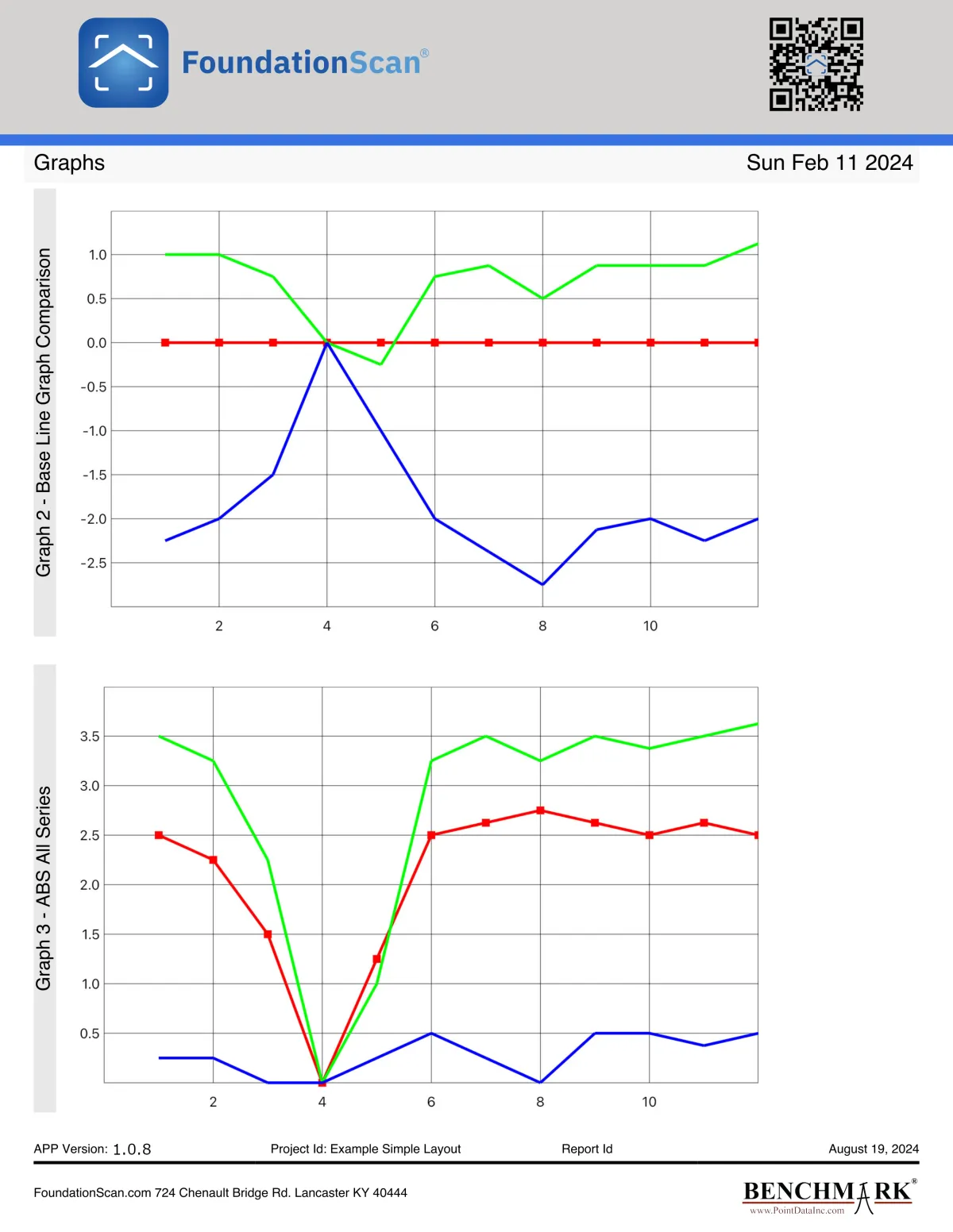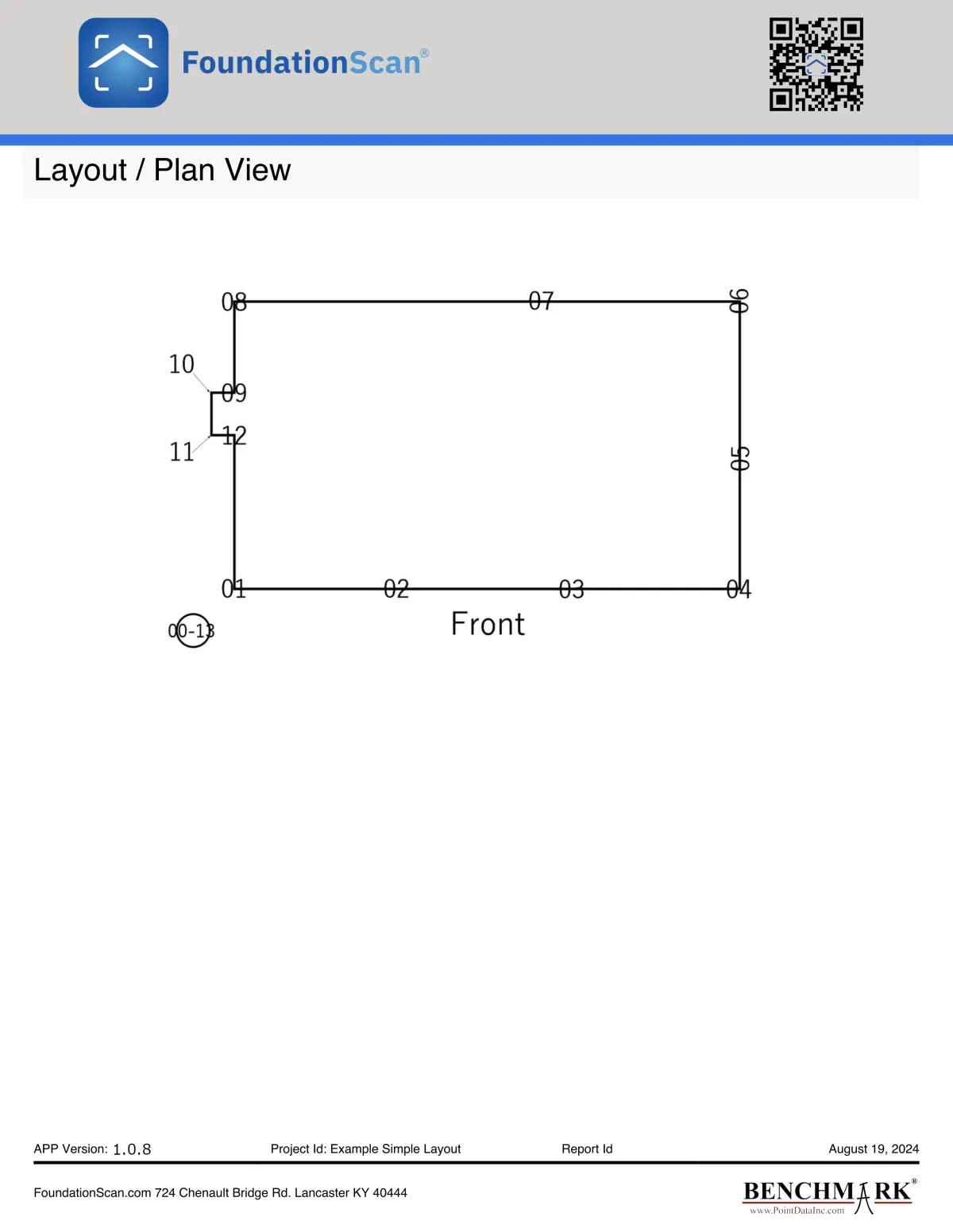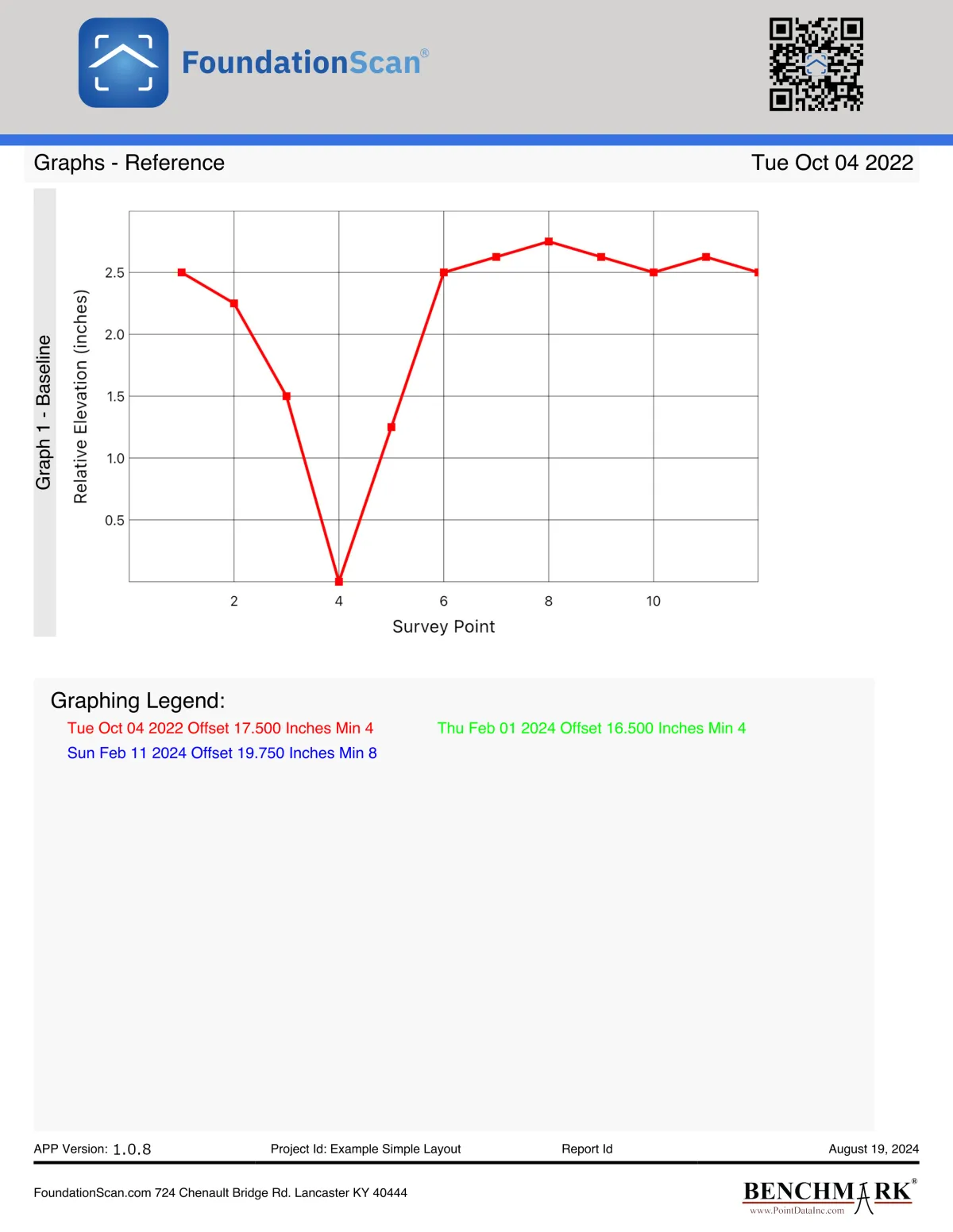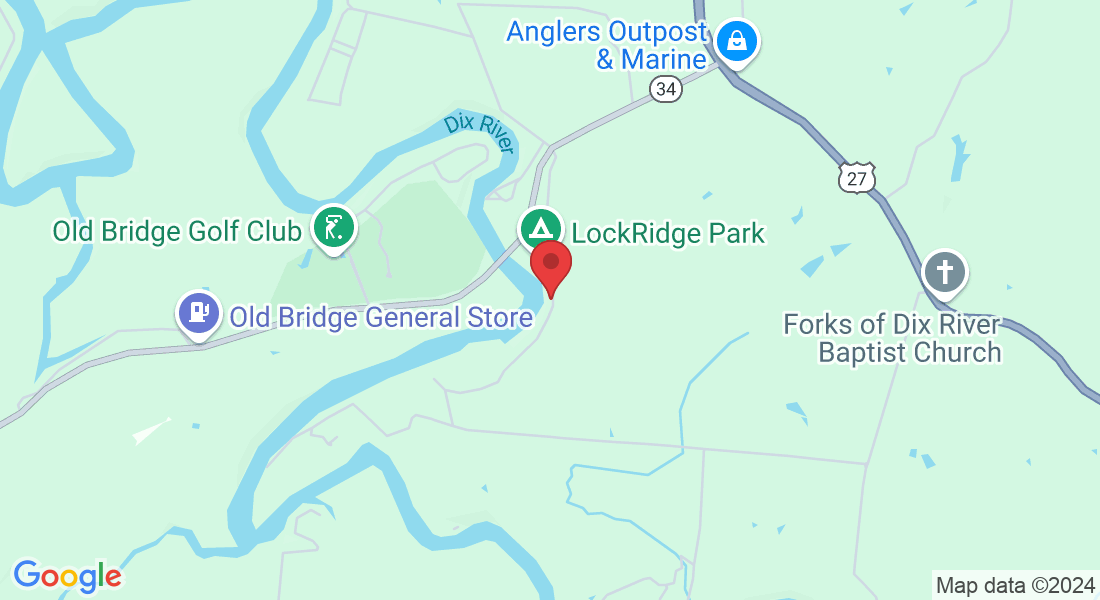
The foundation of a house can move over time. Soil can expand and contract due to changes in water content. Sometimes the ground will slide downhill if the foundation is built on a slope.
Cracks in walls, sticking windows and doors are indications that the foundation has shifted. The Vertical Report Example House has a typical stair-step crack starting in the cinder block wall, extending into the brick work, stopping in the lower corner of the window and starting again at the upper corner. This example has a symmetric crack on the far side wall.
Both the Benchmark® Vertical report and the Benchmark® Topo report can be used to diagnose the issue. The Vertical Report is considered in this section.
Key Benefits:
1. Measures around the perimeter of the entire house to diagnose all the house.
2. Precise measurements show the total foundation movement.
3. Markers are placed in the wall so repeat surveys recording movement over time
can be used to monitor the building.

Data is taken at each of the marked points. Data points are taken near corners, centers of the walls, doors and chimeneas. Your technician may choose other points depending on the situation. A special laser tool that read heights from a bar-coded stick is often used to make the actual measurements.
In this example, the point on the corner at the center of the stair-step crack is low compared to the other points. The stair-step crack is consistent with that corner of the house sliding down compared to the rest of the house.
Small permanent markers are placed in the wall at each data point to make the survey repeatable. This makes it possible to monitor movement in the foundation.
The most important pages from the Example Vertical Report. The Plan View shows the location of each data point. Notice that points 9 – 12 match the points around the chimney on the unfolded Vertical Example House picture. Point 4, around the center of the stair-step crack shows a 2.5″ drop in the first graph (red). A year and a quarter later the second data series (green) shows that the drop increased to 3.5″. A month later the corner was lifted in a repair. The blue data series shows that point 4 was lifted, and the bottom graph shows the blue line is essentially flat compared to the two before repair graphs.
Additional data series can be taken if desired to monitor the success of the repair.
The most important pages from the Example Vertical Report. The Plan View shows the location of each data point. Notice that points 9 – 12 match the points around the chimney on the unfolded Vertical Example House picture. Point 4, around the center of the stair-step crack shows a 2.5″ drop in the first graph (red). A year and a quarter later the second data series (green) shows that the drop increased to 3.5″. A month later the corner was lifted in a repair. The blue data series shows that point 4 was lifted, and the bottom graph shows the blue line is essentially flat compared to the two before repair graphs.
Additional data series can be taken if desired to monitor the success of the repair.
Don’t just take it from us!
CUSTOMER REVIEWS
Six years ago, I was walking around my garden and noticed some stair-step cracks in my brick. I contacted a Benchmark® contractor for a follow up and was elated to learn that the structure had no significant movement since the initial Benchmark® report. The engineer came back and was able to identify a minor easily correctable problem. I had several contractors suggesting to me that necessary repairs could run into the thousands. Knowledge is power and I am grateful I invested in the Benchmark® reports used by FoundationScan®.

Jan / Homeowner
I use Foundation Scan to help my team identify areas that might have been overlooked during diagnosis. With its data-driven insights, we can base our repairs on facts, giving us a powerful tool to present options to customers. For areas that don’t need immediate repair but should be monitored, FoundationScan® builds trust by providing clarity and transparency. It has truly changed our business for the better.

Chris / Foundation Repair Contractor






